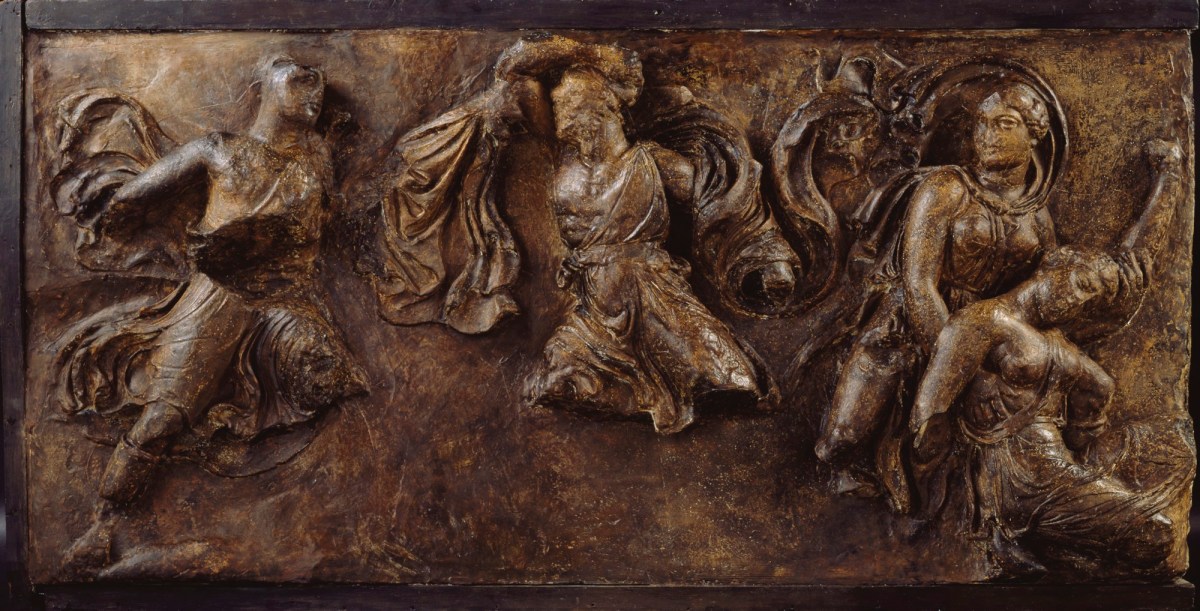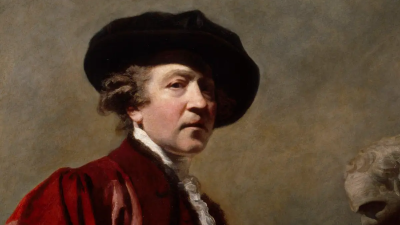
Unidentified sculptor, Amazon fighting with a Greek and wounded Amazon supported by companion., c. 420-400 B.C..
Plaster cast. 725 mm x 1450 mm x 170 mm. © Photo: Royal Academy of Arts, London.
This image is not available to download. To licence this image for commercial purposes, contact our Picture Library at picturelibrary@royalacademy.org.uk
Amazon fighting with a Greek and wounded Amazon supported by companion., c. 420-400 B.C.
After Unidentified sculptor
RA Collection: Art
Plaster cast of a carved marble block from the South side of the continuous frieze of the Temple of Apollo Epikourios at Bassae, in the British Museum.
This cast shows a scene from the “Heraklean Amazonomachy”. On the left, an Amazon wearing a short peplos and a mantle draped over her arm and back rushes towards a Greek. The Greek wears an exomis and a cloak, his right arm raised holding a sword. To the right, a wounded Amazon who has sunk to the ground is supported by a companion.
The Temple of Apollo Epikourios ('Apollo the Helper') at Bassae (Phigalia) in southwest Arcadia, Greece was built between 420-400 BC by the architect Iktinos. A sculpted Ionic frieze of 23 slabs ran around the interior of the main room (cella) of the temple. It showed three battle scenes, the Trojan Amazonomachy, the Herakleian Amazonmachy, and the Centauromachy.
In the summer of 1811 Carl Haller and R.C. Cockerell noticed these panels by chance, supposedly while peering down a fox hole. Haller returned to excavate in 1812. In 1814, the British Museum purchased all of the slabs. Under the direction of Richard Westmacott RA in 1816, the Royal Academy commissioned casts of the complete frieze. Sixteen of the 23 casts are still today at the Academy.
Object details
725 mm x 1450 mm x 170 mm
Start exploring the RA Collection
- Explore art works, paint-smeared palettes, scribbled letters and more...
- Artists and architects have run the RA for 250 years.
Our Collection is a record of them.



